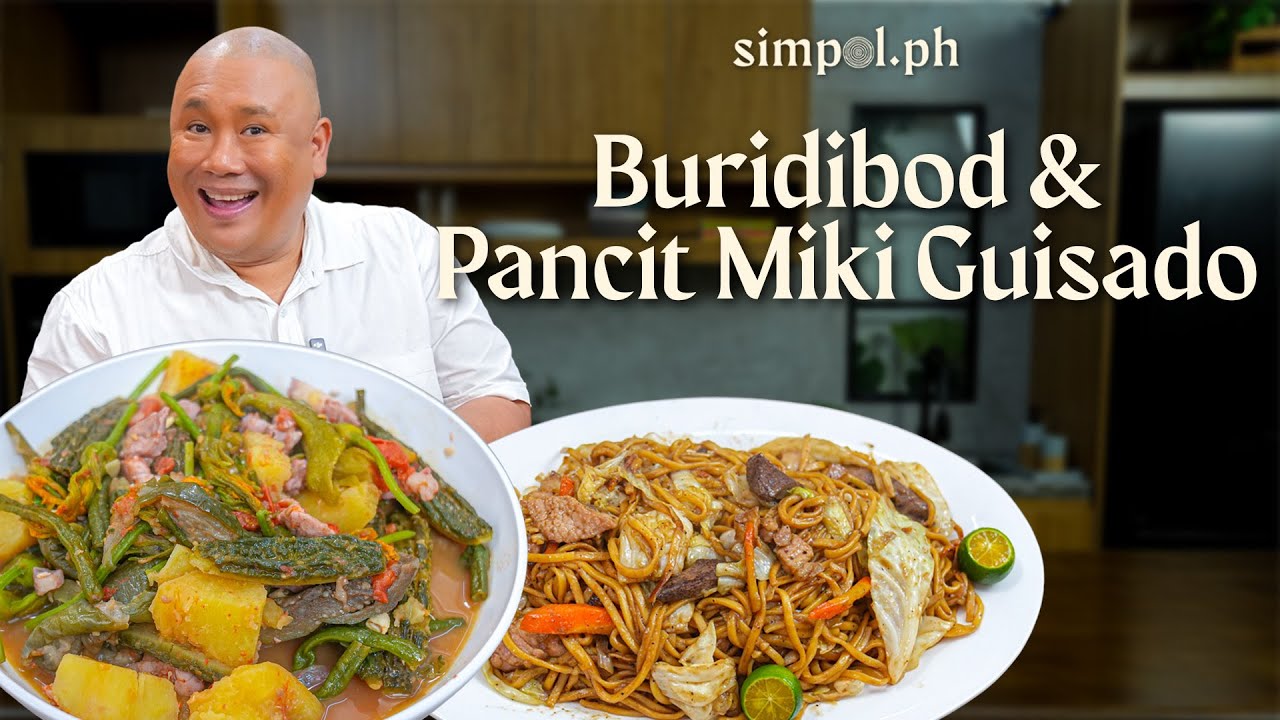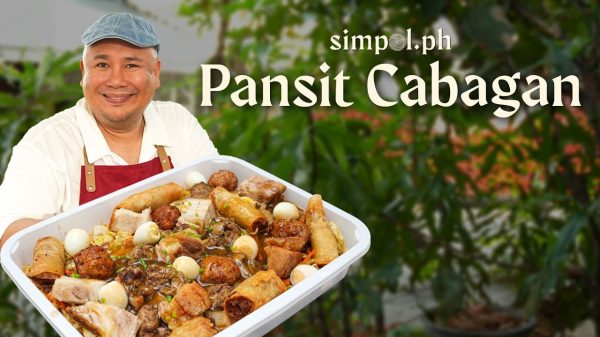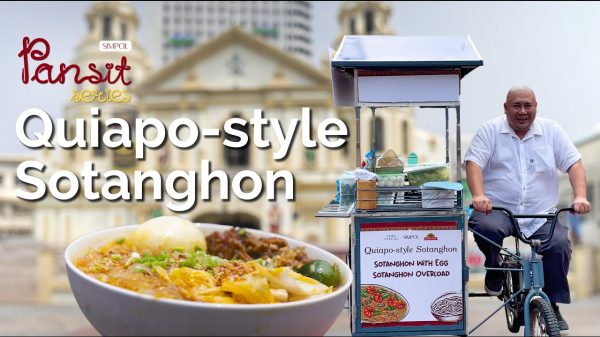Introduction
In today’s times when every peso counts, there’s nothing more comforting than cooking simple dishes made with fresh ingredients from your local palengke. Visiting the market doesn’t just save you money — it also supports small vendors and ensures you’re cooking with produce that’s at its peak flavor.
For this recipe, we’re preparing two dishes side by side:
- Burid – a traditional Ilocano-inspired vegetable dish, similar to pinakbet but with its own unique twist. Instead of kalabasa, we’re using kamote (sweet potato) which adds a natural sweetness that balances the salty bagoong isda.
- Pancit Miki Guisado – a carinderia-style noodle dish that’s quick, hearty, and affordable. It’s the perfect partner to our burid, turning this meal into a festive yet budget-friendly handaan.
Both dishes celebrate the essence of Filipino home cooking — simple, nourishing, and full of flavor.
Burid Recipe with Pork and Vegetables + Pancit Miki Guisado
Ingredients
For the Burid
- 200 –250 g pork belly or pork with a little fat
- 3 –4 medium tomatoes crushed by hand for natural juice
- 1 medium onion sliced thinly
- 3 cloves garlic minced
- 1 thumb-sized piece of ginger sliced
- 2 –3 tbsp bagoong isda fermented fish sauce – the heart of the dish
- 1 medium sweet potato kamote, peeled and cubed
- 2 pcs eggplant quartered
- 1 ampalaya bitter gourd, sliced (optional but adds depth)
- 6 –8 pcs okra trimmed
- 1 bunch sitaw string beans, cut into 2-inch lengths
- 1 small bunch squash blossoms bulaklak ng kalabasa, rinsed
- 1 –2 pcs siling labuyo optional, for spice
- 1 –2 cups water as needed
- Ground black pepper to taste
For the Pancit Miki Guisado
- 250 g fresh miki noodles washed well
- 150 g pork slices with a little fat for flavor
- 100 g pork liver sliced thinly
- 1 medium onion sliced
- 3 cloves garlic minced
- 1 medium carrot julienned
- 1/2 small cabbage repolyo, shredded
- 1 –2 tbsp oyster sauce
- 1 –2 tbsp soy sauce for color and depth
- Ground black pepper to taste
- Oil for sautéing
- Calamansi for serving
Instructions
Cooking the Burid
- Prepare the base: In a pot, combine pork slices, crushed tomatoes, bagoong isda, and about 1 cup of water. Let simmer until the pork begins to tenderize and the tomatoes release their juices.
- Add aromatics: Stir in onion, garlic, and ginger. These balance the strong flavor of bagoong isda and give the dish its comforting aroma.
- Cook the kamote: Add the sweet potatoes and let them cook until halfway tender. The sweetness will melt into the broth and create a natural balance.
- Layer vegetables: Add eggplant and ampalaya. Cover and allow the steam to soften them.
- Okra and sitaw: Add the okra and long beans. These vegetables release their own juices, creating a natural sabaw that’s both malinamnam and healthy.
- Finish with blossoms: Finally, add squash blossoms and siling labuyo (if desired). Cook just until wilted.
- Season and serve: Sprinkle with black pepper and serve piping hot with rice.
Cooking the Pancit Miki Guisado
- Sauté the pork: In a wok, heat oil and sauté garlic and onion until fragrant. Add pork slices and carrots, stir-frying until pork is halfway cooked.
- Add liver: Toss in pork liver, cooking quickly to avoid overcooking.
- Season: Add oyster sauce, soy sauce, and pepper. Mix until well combined.
- Cook the noodles: Add fresh miki noodles, tossing until coated with the sauce and meat. Fresh miki is already tender, so just stir until heated through.
- Add cabbage: Stir in shredded cabbage and cook briefly until wilted but still crisp.
- Finish: Serve hot with calamansi for that fresh, citrusy kick.
Why This Meal Works
- Affordable & Accessible: All ingredients are available in local palengke — fresh, cheap, and always in season.
- Nutritious: Burid is packed with vegetables, while Pancit Miki provides carbs and protein for energy.
- Comforting & Familiar: These are the kinds of dishes that remind us of our lola’s cooking — no frills, just hearty, home-style food.
- Flexible: You can adjust the vegetables in Burid depending on what’s in season, and swap pork with fish or bagnet for a more traditional Ilocano version.
Simpol Cooking Notes
- Burid vs. Pinakbet: Pinakbet usually uses kalabasa, while Burid uses kamote. Both use bagoong, but the flavor profiles differ — Burid leans sweeter and earthier.
- Shortcut for Flavor: Since bagoong isda and tomatoes already provide a strong base, there’s no need to do the usual ginisa at the start.
- Extra tip for Pancit Miki: Always wash fresh miki well before cooking to remove the slightly sour smell from storage.
- Serving suggestion: Serve Burid and Pancit Miki together with lots of hot rice. For added spice, add siling labuyo or chili garlic oil.
























